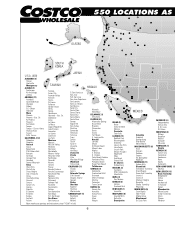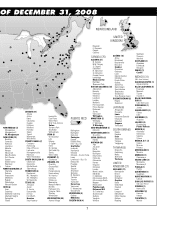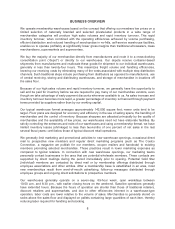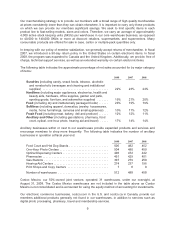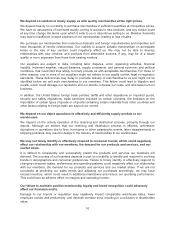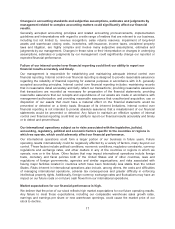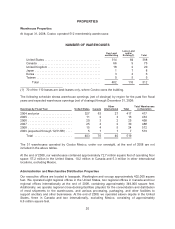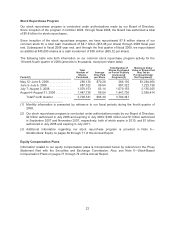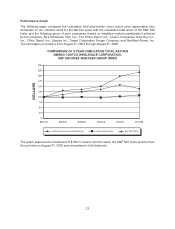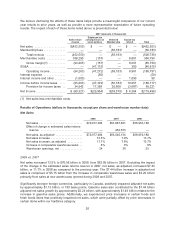Costco 2008 Annual Report Download - page 18
Download and view the complete annual report
Please find page 18 of the 2008 Costco annual report below. You can navigate through the pages in the report by either clicking on the pages listed below, or by using the keyword search tool below to find specific information within the annual report.We depend on vendors to timely supply us with quality merchandise at the right prices.
We depend heavily on our ability to purchase merchandise in sufficient quantities at competitive prices.
We have no assurances of continued supply, pricing or access to new products, and any vendor could
at any time change the terms upon which it sells to us or discontinue selling to us. Member demands
may lead to insufficient in-stock positions of our merchandise, leading to loss of sales.
We purchase our merchandise from numerous domestic and foreign manufacturers and importers and
have thousands of vendor relationships. Our inability to acquire suitable merchandise on acceptable
terms or the loss of key vendors could negatively affect us. We may not be able to develop
relationships with new vendors, and products from alternative sources, if any, may be of a lesser
quality or more expensive than those from existing vendors.
Our suppliers are subject to risks, including labor disputes, union organizing activities, financial
liquidity, inclement weather, natural disasters, supply constraints, and general economic and political
conditions, that could limit their ability to timely provide us with acceptable merchandise. For these or
other reasons, one or more of our suppliers might not adhere to our quality control, legal or regulatory
standards. These deficiencies may delay or preclude delivery of merchandise to us and might not be
identified before we sell such merchandise to our members. This failure could lead to litigation and
recalls, which could damage our reputation and our brands, increase our costs, and otherwise hurt our
business.
In addition, the United States’ foreign trade policies, tariffs and other impositions on imported goods,
security and safety regulations, trade sanctions imposed on certain countries, the limitation on the
importation of certain types of goods or of goods containing certain materials from other countries and
other factors relating to foreign trade are beyond our control.
We depend on our depot operations to effectively and efficiently supply product to our
warehouses.
We depend on the orderly operation of the receiving and distribution process, primarily through our
depots. Although we believe that our receiving and distribution process is efficient, unforeseen
disruptions in operations due to fires, hurricanes or other catastrophic events, labor disagreements or
shipping problems, may result in delays in the delivery of merchandise to our warehouses.
We may not timely identify or effectively respond to consumer trends, which could negatively
affect our relationship with our members, the demand for our products and services, and our
market share.
It is difficult to consistently and successfully predict the products and services our members will
demand. The success of our business depends in part on our ability to identify and respond to evolving
trends in demographics and consumer preferences. Failure to timely identify or effectively respond to
changing consumer tastes, preferences and spending patterns could negatively affect our relationship
with our members, the demand for our products and services and our market share. If we are not
successful at predicting our sales trends and adjusting our purchases accordingly, we may have
excess inventory, which could result in additional markdowns and reduce our operating performance.
This could have an adverse effect on margins and operating income.
Our failure to maintain positive membership loyalty and brand recognition could adversely
affect our financial results.
Damage to our brands or reputation may negatively impact comparable warehouse sales, lower
employee morale and productivity, and diminish member trust, resulting in a reduction in shareholder
value.
16


